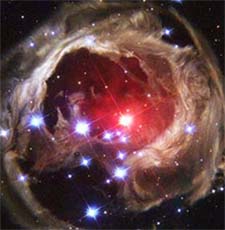 |
|
|
Politics
Main Page |
|
NASA Agrees That In-Depth Look at Future of Hubble Telescope Is Merited
By Danny Jacobs WASHINGTON - NASA leaders agreed Thursday that a "deep and rich" study is appropriate before they make a final decision on the fate of the Hubble Space Telescope. But NASA Administrator Sean O'Keefe repeated his concerns that new safety standards for the space shuttle, which is currently needed to service Hubble, must be met before any mission to the space telescope is contemplated. "First and foremost, we have to comply with every recommendation of the Columbia Accident Investigation Board report," O'Keefe said in testimony to a Senate Appropriations subcommittee. "I cannot abide by the notion of commissioning a servicing mission that doesn't comport with all of those requirements." Still, O'Keefe's statement that the "broader objective . . . is to get the maximum service life out of Hubble," buoyed supporters of the space telescope, whose mission could end earlier than planned if the final service mission by the shuttle does not proceed. "It gives us great hope that NASA could find a way to keep Hubble alive," said Steven Beckwith, director of the Space Telescope Science Institute at Johns Hopkins University, which controls Hubble's scientific operations. The recommendation for an in-depth analysis of the National Aeronautic and Space Administration's decision to prematurely terminate Hubble came in a letter to Sen. Barbara Mikulski, D-Md., from the former chairman of the shuttle Columbia Accident Investigation Board. The chairman, retired Adm. Harold Gehman, said more research needs to be done to determine if the value of a Hubble servicing mission outweighs the dangers. "I suggest only a deep and rich study . . . can answer the question of whether an extension of the life of the wonderful Hubble telescope is worth the risks involved," said Gehman, who had been asked by O'Keefe to review the initial decision on Hubble. In response to Gehman's letter, Mikulski and Sen. Christopher Bond, R-Mo., wrote to O'Keefe asking that the National Academy of Sciences conduct the study. Bond and Mikulski, the subcommittee chairman and ranking minority member, respectively, also asked the General Accounting Office for a cost analysis of another servicing mission. "Hubble is not a piece of techno-junk that's creaky, tattered or worn. What it does need, though, are new batteries and new gyroscopes," Mikulski said in her opening remarks. "Extending the life isn't putting Hubble on a respirator, but is even giving us a wider view of the origins of the universe." O'Keefe said any academy study should look at three topics: what else can be done to extend Hubble's life; what other methods can be used to service it; and whether another servicing mission is worth the risk. On the last item, Mikulski agreed with O'Keefe that safety must come first. "I will stand up for the Hubble, but I will always place the priorities of astronauts first," she said. In January, a final servicing mission to Hubble was deemed too costly and risky after new shuttle safety standards were put in place following the Columbia disaster. That servicing mission could have come as early as 2006. With it, the telescope could be around until 2010 or later; without it, Hubble will become unusable closer to 2007. Gehman's letter said the Columbia board decided that shuttle missions to the International Space Station would best meet safety standards, in part because emergency shuttle repairs can be done at the station. But Gehman also noted much of the risk for a shuttle flight occurs during launch and landing. What the shuttle does once in space would not alter the total risk factor much. "The bottom line: Shuttle flights are dangerous and we should fly the minimum number necessary," Gehman said. "Almost all the risk is concentrated in the front and back of the mission -- where one goes on orbit makes little difference." Rep. Steny Hoyer, D-Mechanicsville, applauded Gehman's letter, saying it was "too premature" to abandon the space shuttle. Hoyer, whose district includes Greenbelt-based Goddard Space Flight Center, which manages the telescope, urged "the National Academy of Sciences and the General Accounting Office to expedite this study." "To abandon a widely regarded scientific treasure like the Hubble by canceling the next servicing mission seems to be hasty and shortsighted," Hoyer said in a statement. Beckwith agreed that astronaut safety is the top priority, but said he was not aware of anything other than the shuttle that could be used to service the telescope in the next few years. "We know that servicing method works well," he said, noting that astronauts have made 18 successful spacewalks in the previous four servicing missions. The news of Gehman's letter came two days after the institute unveiled the "Ultra Deep Field" snapshot from Hubble, the deepest-ever view of the universe, featuring an assortment of jumbled galaxies dating nearly to the "big bang" 13.7 million years ago. "The great popularity of the Ultra Deep Field has given everyone a good boost," Beckwith said. "The letter has given people a great deal of hope that NASA can do another servicing mission."
Last updated: 04/09/04 02:04 PM Copyright © 2004 University of Maryland Philip Merrill College of Journalism |

